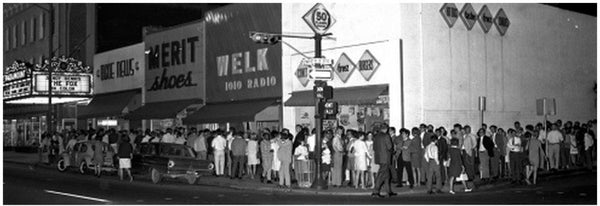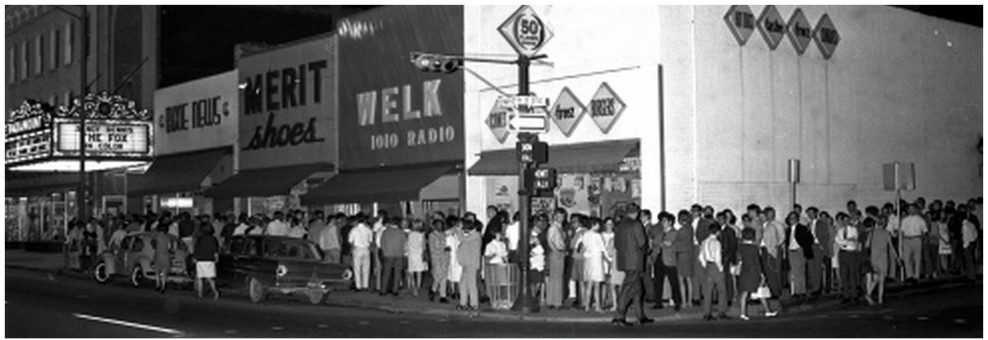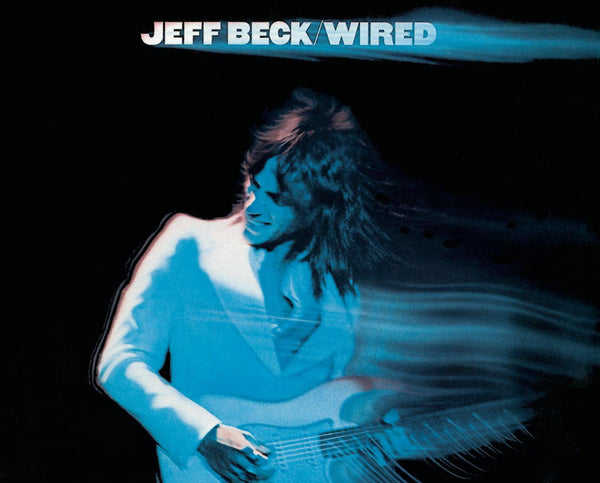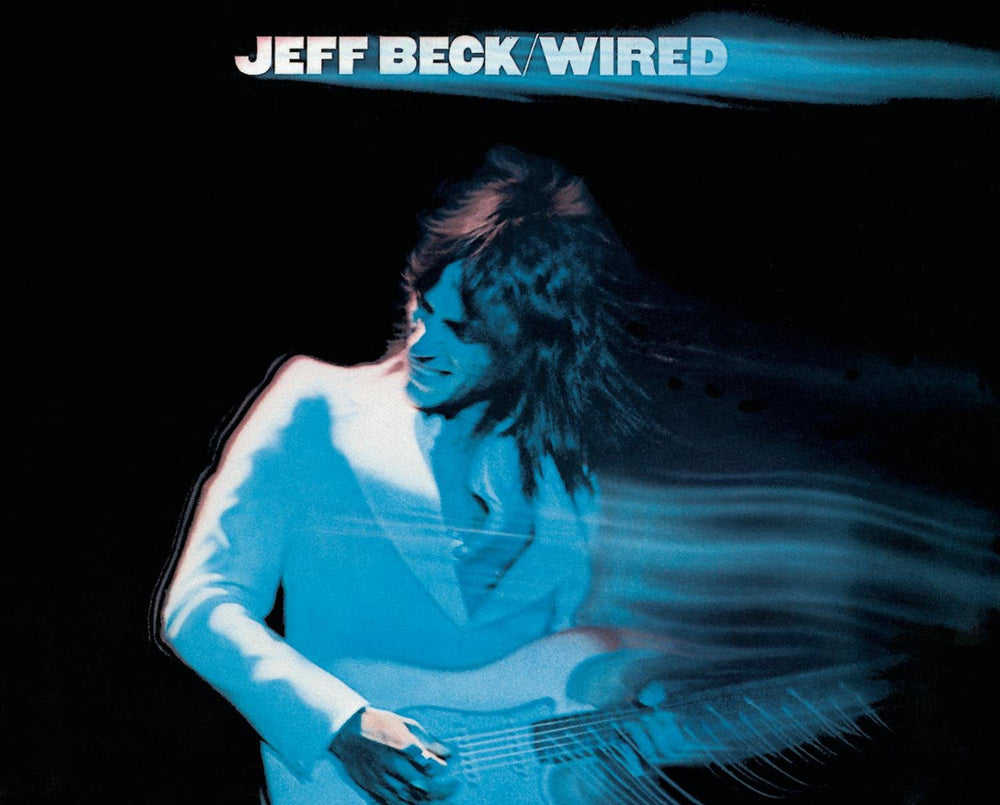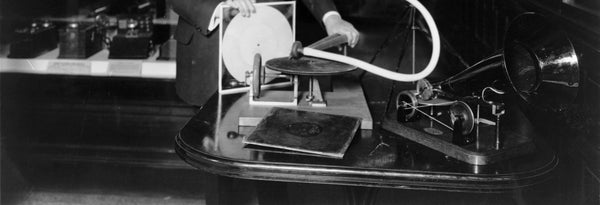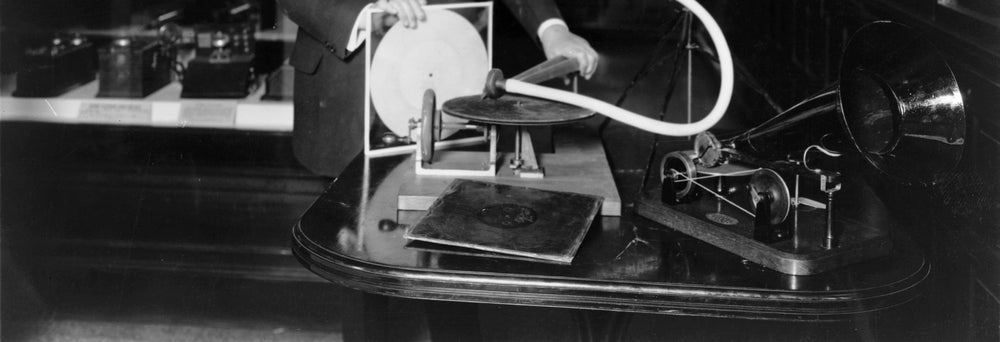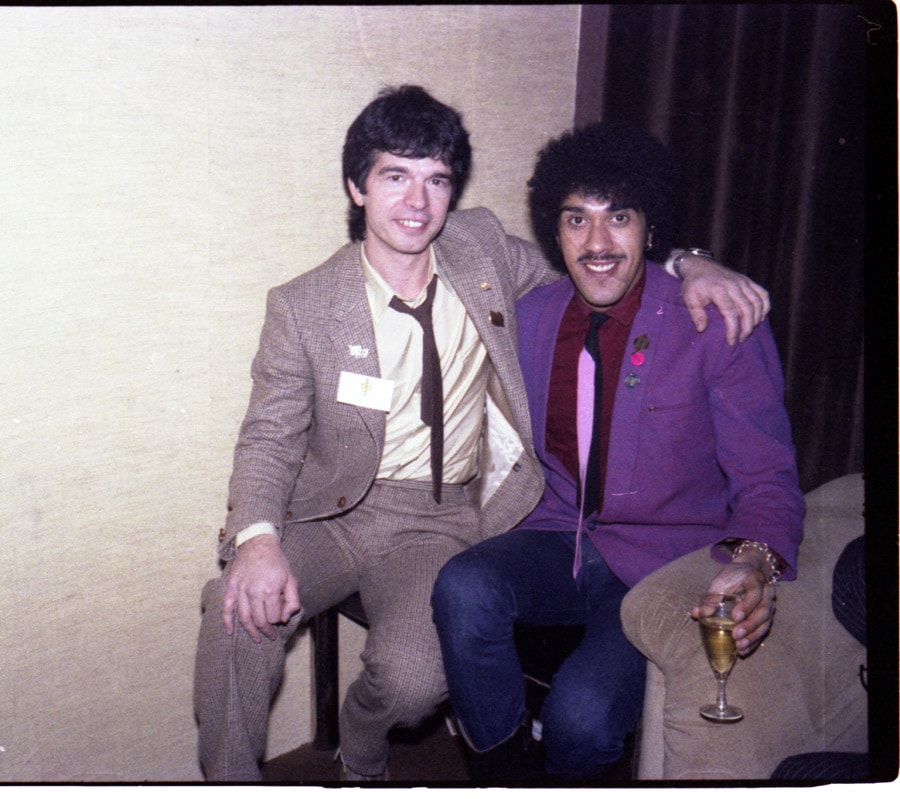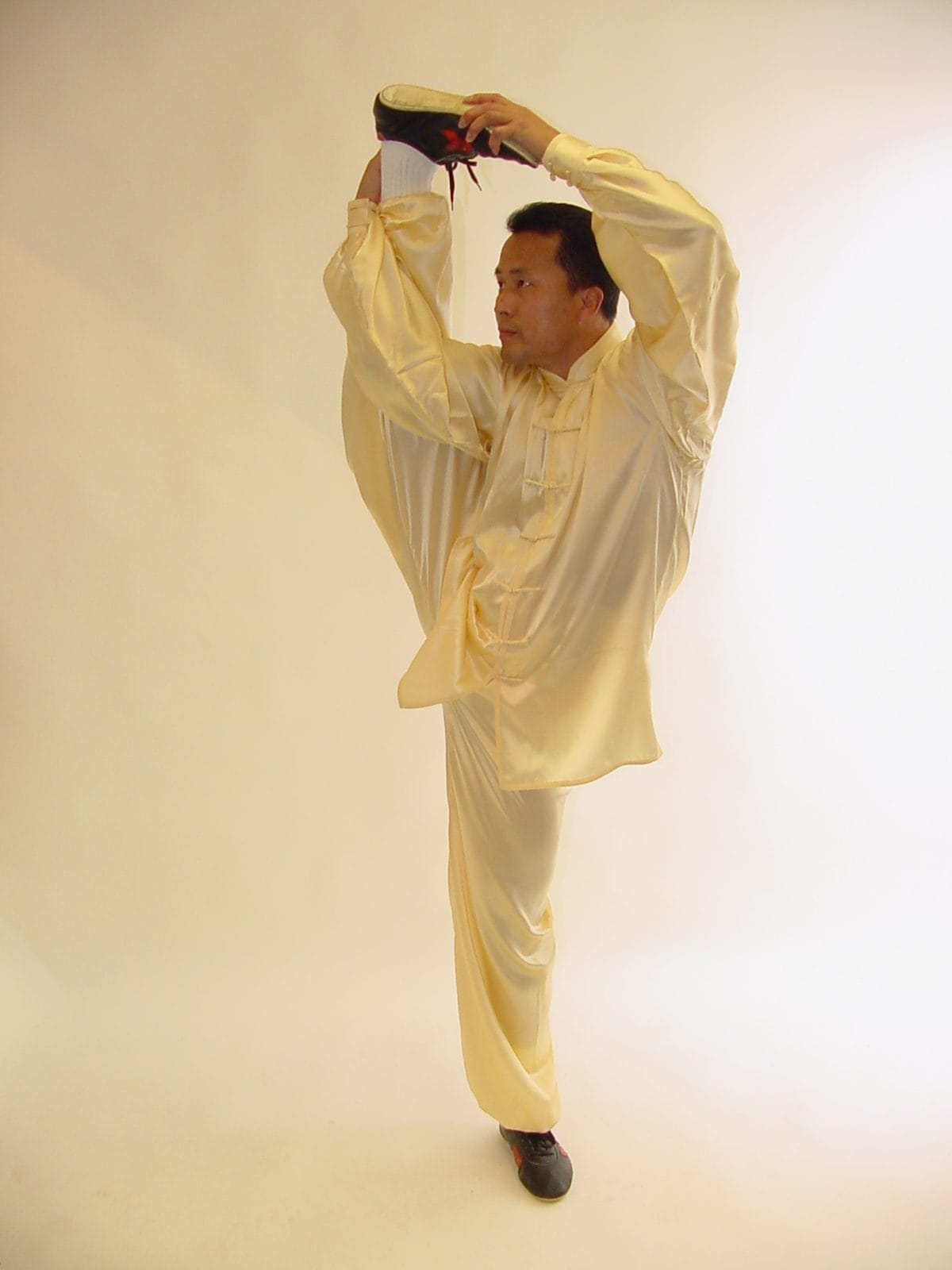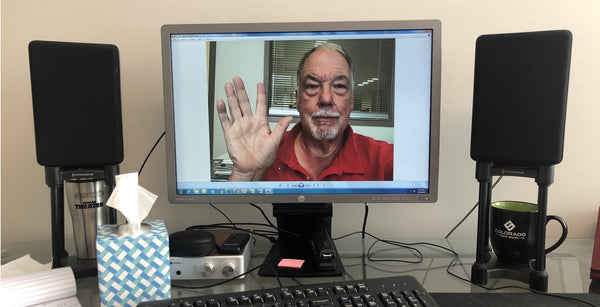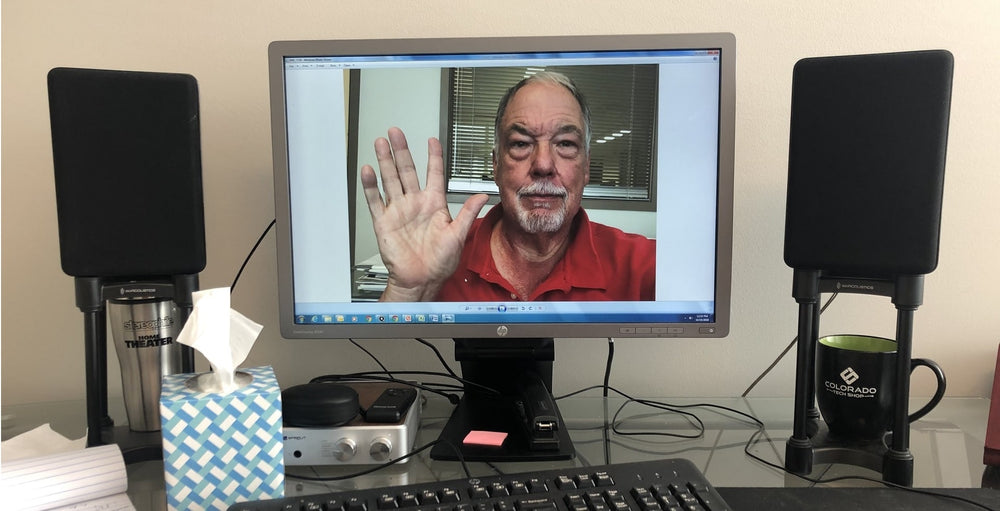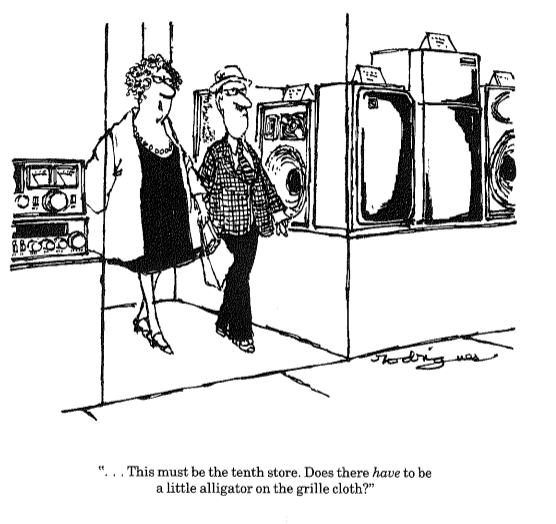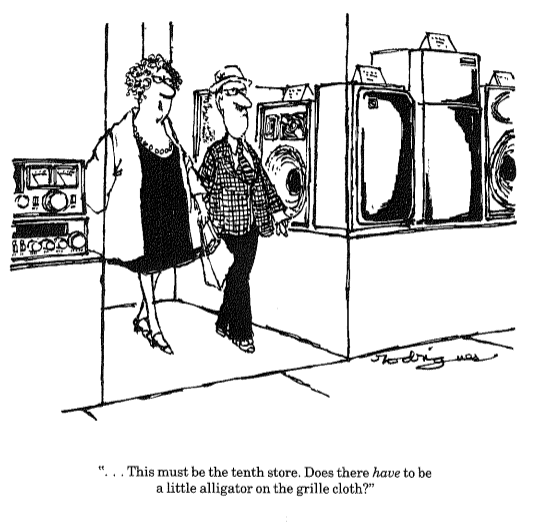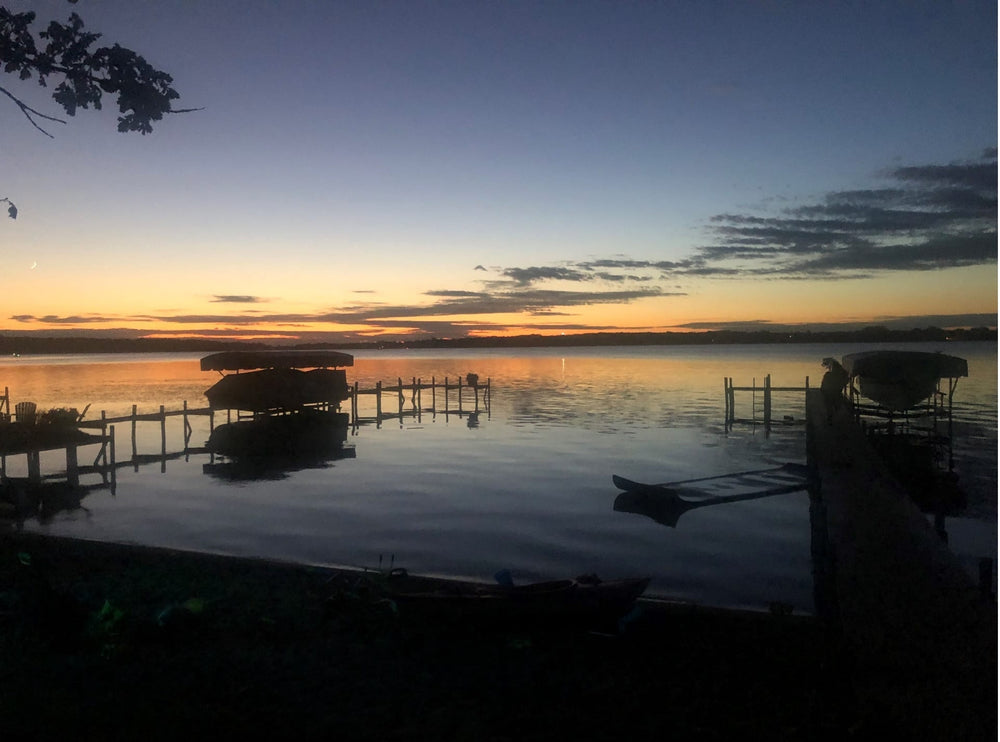Back in Copper #39 I wrote a piece on the unsung 4th Symphony of the great 20th Century Russian composer Dmitri Shostakovich, and I hadn’t managed to cover a selection of the available recordings, or make a recommendation. So I decided to return to the subject for this column and finish the job. I have confined myself to those recordings I have in my personal Library, which means I have by necessity had to omit some highly regarded and notable performances, such as the original recordings by Kondrashin with the Moscow Philharmonic. But there are far too many recordings available for me to cover them all, and if I have to draw a line in the sand somewhere it must inherently be done in a somewhat arbitrary fashion.
A lot of these recordings are in DSD, or high-resolution PCM. But most are taken off CD. I have included sound bites from each of them, all in 320mbps MP3 format, converted by myself using in-house software. So they’re as good as I can get them, but that’s about as far as it goes. You would probably do best, if you have the option, of listening on headphones.
So, without further ado, let’s get the ball rolling:
————————————————————–
 Andris Nelsons, Boston Symphony Orchestra
Andris Nelsons, Boston Symphony Orchestra, a live recording from 2018, 24/96 download. The recording is bright, airy and detailed, with punchy brass, sparkling strings, and forward percussion. He sets off at a brisk tempo, promising an energetic and forceful reading; but it is a politician’s promise. It sounds a lot like something we’d want, and might even look forward to, but such promises can be a lot easier to make than to deliver on. The problem is that the energy and tension in a classical music performance of this magnitude needs to build and release, build and release, build and release. So you don’t want to be summiting Everest for your opening statement. Consequently, by the time we get to the final movement we have to deal with feelings of “
Where’s The Beef” that in all honesty are mostly unwarranted. Most of the parts of Nelsons’ recording are really excellent in isolation, and serve very well as exemplary snippets. Here is a passage that serves to illustrate it well. I call this passage the “swarm of locusts”, and in Nelsons’ hands it makes for exciting listening:
Unfortunately, this recording would make for a superb teaching case for how the whole can be less than the sum of its parts. The entire first movement is a mouthwatering feast for the auditory senses, and sets the table creaking with goodies. But movements 2 and 3 fail to deliver on the pre-election promise, and leave the listener feeling slightly cheated on just what could have been. There is a lot of frenetic playing that seems frenetic for its own sake, and a degree of frenetic sameness seems to take hold. But with repeated listenings it fails to gel as a cohesive whole. So, in summary, it has a lot going for it, but falls short of being a reference.
 Yannick Nézet‐Séguin, Rotterdam Philharmonic Orchestra
Yannick Nézet‐Séguin, Rotterdam Philharmonic Orchestra, December 2016, 24/96 Download. Montrealer ‘YNS’ is one of the hottest young properties in the classical music scene these days, having been appointed as James Levine’s successor at the New York Metropolitan Opera. I saw him a couple of years back performing this with Montreal’s Orchestre Metropolitain, and it was a riveting concert that left me quite breathless.
The problem here is that the Rotterdam Philharmonic, much to my surprise, seems to be somewhat short of the standards set by the OM, which itself is Montreal’s number two orchestra. In the live performance, YNS had a spectacular grasp of the arc and flow of the symphony, and the orchestra danced in his hands like a marionette. Here the Rotterdam Phil seems a bit lost, as in this passage from the third movement:
I can’t really get as enthusiastic about this recording as I would like to, given the generally stratospheric level of my regard for YNS.
Vasily Sinaisky, BBC Philharmonic Orchestra, Live at the Proms in 2000, CD. This was a CD giveaway with the BBC Music Magazine back in 2000, one of many which were of a quality waaaaay above what you would expect as a freebie. As a live Prom concert recording, the sound quality falls short of that offered by some of the outstanding recordings here, and the performance itself is also not going to win my top award, but both are worthy of a solid mid-pack listing. Sinaisky scores points for the air of mystery and understated menace which pervades this interpretation. Take this short passage from the first movement:
The sonorities of the BBC Phil are a mixed bag. The bassoon tone in particular, you’ll have noted, is smooth and rounded, and the drums and percussion are tight and accurate, but the strings are messy at times, and the lower four notes of the Celesta’s 8-note repeated pattern in the coda somehow gets lost in the balance. But despite its flaws, this is a recording I can happily come back to from time to time.

Bernard Haitink, London Philharmonic Orchestra, Recorded in 1979 as part of a complete symphony cycle, on CD. Haitink has always been one of my go-to conductors, but here with the London Philharmonic Orchestra, his effort also falls wide of the mark. There is an element of cacophony to the sound, and while that is undoubtedly inherent in the symphony, and arguably even desirable in an ideal performance, here it just fails to hang together. Try this passage, from the opening movement:
Is it the LPO’s unimpressive playing, or Haitink’s unconvincing vision of the symphony? Or maybe a combination of both?

Rudolf Barshai, WDR Symphony Orchestra, Recorded in 1996 as part of a complete symphony cycle, on CD. From beginning to end, this is a worthy symphony cycle, and the 4th takes its place among them. Barshai’s phrasing and tempi are assured and commanding throughout this difficult piece, and indeed he makes a lot of its more difficult passages flow freely and naturally. This is an excellent recording for anybody looking for an introduction to this complex piece. In this excerpt he brings the first movement to a nervous close, simmering with an unresolved tension:
Not only is Barshai’s arc and vision assured and convincing, but the playing of his WDR Symphony Orchestra is absolutely first class, and the whole thing is rather well recorded. Even the second movement, a troublesome interlude which manages to trip up the most sophisticated of conductors is handled expertly by Barshai. And by the time the third movement starts, we know we will be in assured hands right through to the end. Well, not really, as it turns out. The climax is an epic disappointment. It is, if I may put it this way, a colossal premature ejaculation, in which the carefully controlled tension breaks, not so much in a controlled release, as a chaotic explosion which is suddenly over and has given way to the coda before you realized what has happened. It just doesn’t work – incredibly so – and ruins an otherwise impeccable performance.

Mariss Jansons, Symphonieorchester des Bayerischen Rundfunks, 2004, on CD. I have this CD because Maris Jansons is, if I may be so bold, among living conductors today, right at the top of the tree. His Shostakovich 7th with the RCO is the best I have yet heard. So I had high hopes for this one. And it has a lot of Jansons about it. He is a man who understands how to make a symphony tell a story. Not in the Hollywood way, but in the musical sense, where everything just makes sense, and you come away with a deeper understanding of what the composer originally had in mind. Here is a typical example, which Shostakovich seems to be trying to summon some sort of demon from a Siberian mud swamp:
But somehow Jansons isn’t pulling ahead of the pack with this particular performance. He doesn’t even reach the level of the largest part of the Barshai recording. Sure, everything is there. The playing is up to the usual standards of the Bayerischen Rundfunks, but there is just a pervading element of politeness that kind of infects it. Everything is just a little bit too refined, too polite. Shostakovich was a soviet iconoclast and a very typically Russian non-conformist. Particularly with the 4th. So we need to see aspects of a performance which are little less safe, a little more out there. And that’s not apparently in Jansons’ comfort zone. But the final climax certainly is. Jansons’ reading of the climax and coda are up there with the best, although, as we’ll read later, there are some other guys out there who will nail those final sonorities with style and precision.

Roman Kofman, Beethoven Orchester Bonn, 2006, SACD. This was one of the first DSD recordings of the Shostakovich 4th I ever got hold of, and its sonics were of course seriously impressive. But Kofman’s recording fell further down the pecking order each time a new recording came along. He really doesn’t have a lot to say for himself with this repertoire. It plods along – in glorious SACD technicolor, it must be said – but it still plods along. Take this section from the second movement. It fairly sings – at least it should – but under Kofman it is yawn-inducing:
I really can’t be bothered to write anything more about it.

Neeme Järvi, Scottish National Orchesta, 1989, on CD. Neeme Järvi is another conductor with a pre-eminent reputation, and here he is on Chandos conducting the Scottish National Orchestra in another performance to add to the ‘meh’ pile. And while it would be easy to place the blame on a barely-heard-of-’em regional orchestra, the fact is that their playing is actually quite good. Check out this passage from the first movement:
No, the problem here is Neeme Järvi’s rather ‘meh’ interpretation, which doesn’t really say anything much about what the composer may have had in mind. It’s a bit of a conducting-by-numbers performance really. The recording by Chandos is clean and well balanced, and is a delight to listen to. The climax is powerful, and is something you might consider getting out when friends come round and need to be impressed. But at the end of the day, if this is your only CD of the Shostakovich 4th, you’d be quite justified thinking it to be a rather immature work, and unworthy of Shostakovich’s stellar reputation as probably the premier symphonic composer of the 20th century.

Simon Rattle, City of Birmingham Symphony Orchestra, 1994, on CD. This was recorded back when Rattle was just plain old Simon, and Claudio Abbado was the Maestro at the helm of the Berlin Phil. It was also just a few short years after I saw him conduct the Bournemouth Symphony Orchestra on Paignton Pier. It was onward and upward for Sir Simon, who now helms the venerable LSO. And here we are considering this modestly competent romp through the Shostakovich 4. Here’s how he handles the heavy going early on in the third movement. Lots of excitement, but not so much as to break the tension going forwards:
It is a promising performance of the 4th, with a lot to commend it. The CBSO is not the Berlin Phil; their string tone tends towards the brittle, and there is a noticeable want of refinement when the going gets tough. As we will see later, there are orchestras out there that will put them to shame. But they do give their best, and at the end of the day their best is better than many of the recordings reported here. Rattle’s interpretation is clear-headed and consistent from first note to last, but I think today’s more mature Rattle would be looking to make some significant improvements.

Esa-Pekka Salonen, Los Angeles Philharmonic, Live recording from 2011, on CD. Salonen, as is his wont, can be counted upon to conjure a splendid sonic picture of colors and textures from the orchestral palette, and his 4th Symphony offers up an entire smorgasbord. It is a performance which is captivating to listen to from beginning to end. But Salonen too often finds himself at odds with the music’s more difficult passages. It’s as though he is pining for the more accessible classicism of a Tchaikovsky or a Sibelius. Listen to this difficult passage from the third movement, where he really doesn’t seem to know where he wants to go with it:
So, in broad strokes, we have a performance which is really quite promising in many places, with polished sonics and Salonen’s usual assertive dynamics. And many people are going to consider it a pretty decent performance of a pretty weird symphony. If your preference is to demonstrate to people how Shostakovich’s 4th is a confused work from an immature composer who’s not quite ready for the Prime Time, then this is the recording for you.

Mark Wigglesworth, Netherlands Radio Philharmonic Orchestra, 2005, on CD. This performance was rather well received by the critics, and rightly praised for the English conductor’s vision of the work as a unified whole. It is a recording that rewards listening over and over, yet at the same time without offering up any true ‘signature’ moments. And maybe that is a hallmark of greatness. Yes, his tempi are a little on the slow side, and there is a question as to whether that is the best artistic choice for this work (but see Pletnev, Mikhail). But Wigglesworth does make it work. Listen to how deftly he handles this quirky passage from the 3rd movement:
Whether this performance is for you is all down to whether or not you can live with the slightly lumbering tempi, particularly in the key opening and closing sequences. If you consider they convey gravitas and authority then you’ll be fine. But if you find yourself on your feet, trying to wave the baton a little faster, then maybe you’d be happier elsewhere.

Mikhail Pletnev, Russian National Orchestra, 2017, DSD64 digital download. What was I saying about slow? OMG, if you want slow, then this one has slow by the bucketful. Here, Pletnev seems to be channeling the likes of Celibidache, Bernstein, and Giulini. But guess what, it does kind of work for him! Much has been said of the fact that Shostakovich was inspired by Mahler’s 4th symphony, and Pletnev’s measured tempi do much to emphasize the Mahlerian essence of Shostakovich’s offering. Check out this passage from the first movement:
One thing the Pletnev recording does have going for it is its truly first class recording quality from Erdo Groot and his redoubtable team at Pentatone. Downloaded in pure DSD from nativedsd.com, this is an epically gorgeous recording. In combination with those slow, measured tempi, it serves to just draw you in like a $10,000 overstuffed down-filled sofa. Where Wigglesworth’s slow pace makes you want to jump up and wave your baton, Pletnev’s hypnotic and mesmerising sound instead slows your world down to his pace. Enthusiastically, and unexpectedly recommended.
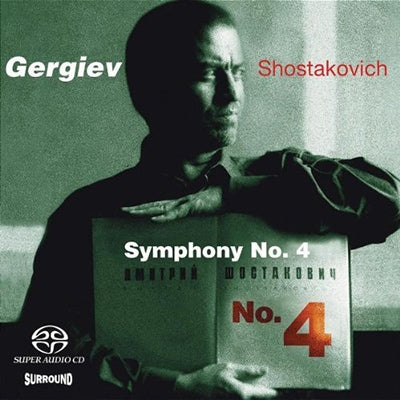
Valery Gergiev, Mariinsky Theatre Orchestra, 2001, SACD. This is one of two recordings of the 4th by Gergiev and his Mariinsky Orchestra, the other being recorded in 2011. Gergiev plods through this one just like he does most everything he conducts. For a Russian conductor, he apparently has precious little to say about an important work from one of his country’s most famous Classical Music sons. His tempi are wildly inconsistent – too slow in places – and, having established a slowness of tempo, way too fast in others. In the passage below the introduction to the first movement has passed, and now it’s time to start setting the table. But Gergiev isn’t setting anything particularly attractive upon it:
The Mariinsky Orchestra (previously known as the Kirov Orchestra) has a stellar reputation, but you wouldn’t know it from the raggedy playing and the occasionally strident woodwind sounds. And the SACD sound does not compare at all favourably with Pletnev’s rich Pentatone recording. All in all, there is nothing in this recording to commend it, with so many obviously superior alternatives.

Gianandrea Noseda, London Symphony Orchestra, Recorded live in 2018, DSD digital download. This is another excellent release in the LSO Live series, recorded natively in DSD256 but only available thus far as a DSD64 download from nativedsd.com. It has a lot going for it, despite what sounds like a clumsy edit some 22 seconds into the first movement. I have always advocated for this symphony to be played with almost a reckless abandon, and this is what Noseda seems at first glance to be aiming for. Have a listen to the introductory bars of the first movement:
While Noseda is delivering what I was hoping to hear, at the same time there is a kind of holding back by the LSO players, a reticence to really let themselves give it a proper go. One almost wishes the whole orchestra could have indulged themselves in a decent skinful immediately prior to the recording session. But since it was a live concert recording, I’m guessing that was not on the agenda. Shame. It holds it back from getting the enthusiastic recommendation I was really wanting to give it.

Vasily Petrenko, Royal Liverpool Philharmonic Orchestra, 2013, SACD. Kent Nagano steps down as music director of the Orchestre Symphonique de Montréal next year, and Vasily Petrenko is the man I would dearly love to see get the gig. He has guest-conducted in the past…so who knows? If the selection committee is in any doubt, I would point them at this recording. From the first bars to the last, young Petrenko (unrelated to Kyril Petrenko, who succeeded Rattle at the Berlin Philharmonic) delivers a poised and assured rendition. Here we have the climax to the third movement, just before the closing coda. It pretty much screams like Axl Rose:
The RLPO delivers an assured performance with a thrillingly refined, yet youthfully exuberant orchestral texture. They provide the closest approach yet to my ideal of wild abandonment, yet when a sophisticated touch is called for they deliver a convincing impression of the Concertgebouw. Petrenko himself has a sure hand on the narrative arc of the piece, with tempi, dynamics and rubato all convincingly and assuredly delivered. And the sound quality, while not quite up there with the Pentatone, is still pretty darned good, with just a little bit more soft compression than you’d ideally like to see. But on balance, you really wouldn’t go far wrong with this one.

Dmitri Kitaenko, Gürzenich Orchester Köln, Recorded live in 2003, SACD. Released only as part of a 12-SACD box set, this recording can be hard to come by, but in fact the entire set is rather good. Maybe you can pick one up used at a good price. Compared to the very best here, the orchestral textures are rather thick, and the recording quality, while better than CD, is not quite at the level of the Pentatone. But Kitaenko coaxes a thoroughly respectable performance from the Cologne orchestra, and you soon find yourself paying proper attention. Consider this atmospheric passage from the first movement, played with delicacy, and a sure touch. It has you just closing your eyes:
In many ways Kitaenko’s is an old-fashioned interpretation, invoking impressions of Klemperer or Solti. His phrasing is generally melodious, yet thoughtful. For example, his wistful opening to the 3rd movement is very convincing indeed, and builds with a sure touch. Yet this same wistfulness becomes a tendency on occasion towards lethargy and indecision. But all told, there are some real insights to be found in this performance.

Valery Gergiev, Mariinsky Theatre Orchestra, 2013, SACD. It’s almost as though Gergiev was embarrassed by his Shostakovich recordings of a decade earlier and set about putting the record straight. And put it straight he has. There is almost nothing of the uninspiring 2001 interpretation in this recording. Instead we have a performance of genuine character. Gergiev gives us a very Russian reading of a very Russian symphony. The recording quality is right up there too. Here is the entirety of the final climax, with its Mahlerian coda that closes out the symphony:
This is a sure-footed performance that deserves serious consideration. At no time does Gergiev lose his way, and the quiet passages and loud outbursts alike give way to each other naturally and progressively. The orchestral tones are suitably dark throughout. The woodwinds play really beautifully, the brass is powerful without dominating, and the strings are tight and disciplined, and that magical closing Celeste call is clean and delicate. There are times when the orchestral perspective seems a little distant, but overall the sound is superbly captured. This recording comes very highly recommended indeed.
————————————————————–
So in summary, do we have a winner? I’ll ask Mr. Collins represent the firm of Ernst & Young to hand me the envelope…
Before handing out the medals, let’s shout out a few honourable mentions. First to Andris Nelsons and the Boston Symphony. It sounds great, it’s exciting, and it may be just what you’re looking for. Also to Rudolf Barshai and the WDR Symphony. If you’ve been let down a lot in your life and become accustomed to it, perhaps you won’t mind this one so much. It’s really a perfect night out…right up until the moment she says no. Finally to Dmitri Kitaenko and the Gürzenich Orchester Köln. If your system uses Single-Ended Triodes, then maybe this nostalgic beauty is just the one you’re looking for.
Finally, if you’re still reading, here we go.
In third place, Vasily Petrenko and the Royal Liverpool Phil. A thoroughly modern performance from a dynamic young up-and-comer. This is the real thing.
In second place, and it could just as easily be in first, Mikhail Pletnev and the Russian National Orchestra. Pletnev has the vision, and the chops to deliver it in truly convincing fashion. I’m just not convinced it’s the right vision…at least until the next time I play it.
In first place, for the time being at least, Valery Gergiev and the Mariinsky Orchestra. The 2013 recording, of course. It just has everything, and all the stars, for once, manage to line up for Gergiev.


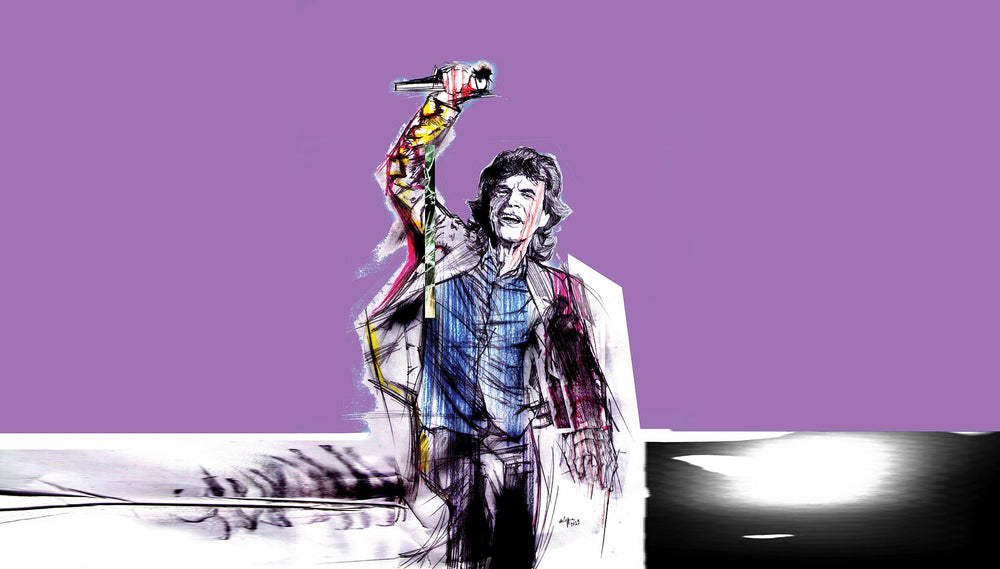
 Andris Nelsons, Boston Symphony Orchestra, a live recording from 2018, 24/96 download. The recording is bright, airy and detailed, with punchy brass, sparkling strings, and forward percussion. He sets off at a brisk tempo, promising an energetic and forceful reading; but it is a politician’s promise. It sounds a lot like something we’d want, and might even look forward to, but such promises can be a lot easier to make than to deliver on. The problem is that the energy and tension in a classical music performance of this magnitude needs to build and release, build and release, build and release. So you don’t want to be summiting Everest for your opening statement. Consequently, by the time we get to the final movement we have to deal with feelings of “Where’s The Beef” that in all honesty are mostly unwarranted. Most of the parts of Nelsons’ recording are really excellent in isolation, and serve very well as exemplary snippets. Here is a passage that serves to illustrate it well. I call this passage the “swarm of locusts”, and in Nelsons’ hands it makes for exciting listening:
Andris Nelsons, Boston Symphony Orchestra, a live recording from 2018, 24/96 download. The recording is bright, airy and detailed, with punchy brass, sparkling strings, and forward percussion. He sets off at a brisk tempo, promising an energetic and forceful reading; but it is a politician’s promise. It sounds a lot like something we’d want, and might even look forward to, but such promises can be a lot easier to make than to deliver on. The problem is that the energy and tension in a classical music performance of this magnitude needs to build and release, build and release, build and release. So you don’t want to be summiting Everest for your opening statement. Consequently, by the time we get to the final movement we have to deal with feelings of “Where’s The Beef” that in all honesty are mostly unwarranted. Most of the parts of Nelsons’ recording are really excellent in isolation, and serve very well as exemplary snippets. Here is a passage that serves to illustrate it well. I call this passage the “swarm of locusts”, and in Nelsons’ hands it makes for exciting listening: Yannick Nézet‐Séguin, Rotterdam Philharmonic Orchestra, December 2016, 24/96 Download. Montrealer ‘YNS’ is one of the hottest young properties in the classical music scene these days, having been appointed as James Levine’s successor at the New York Metropolitan Opera. I saw him a couple of years back performing this with Montreal’s Orchestre Metropolitain, and it was a riveting concert that left me quite breathless.
Yannick Nézet‐Séguin, Rotterdam Philharmonic Orchestra, December 2016, 24/96 Download. Montrealer ‘YNS’ is one of the hottest young properties in the classical music scene these days, having been appointed as James Levine’s successor at the New York Metropolitan Opera. I saw him a couple of years back performing this with Montreal’s Orchestre Metropolitain, and it was a riveting concert that left me quite breathless.














